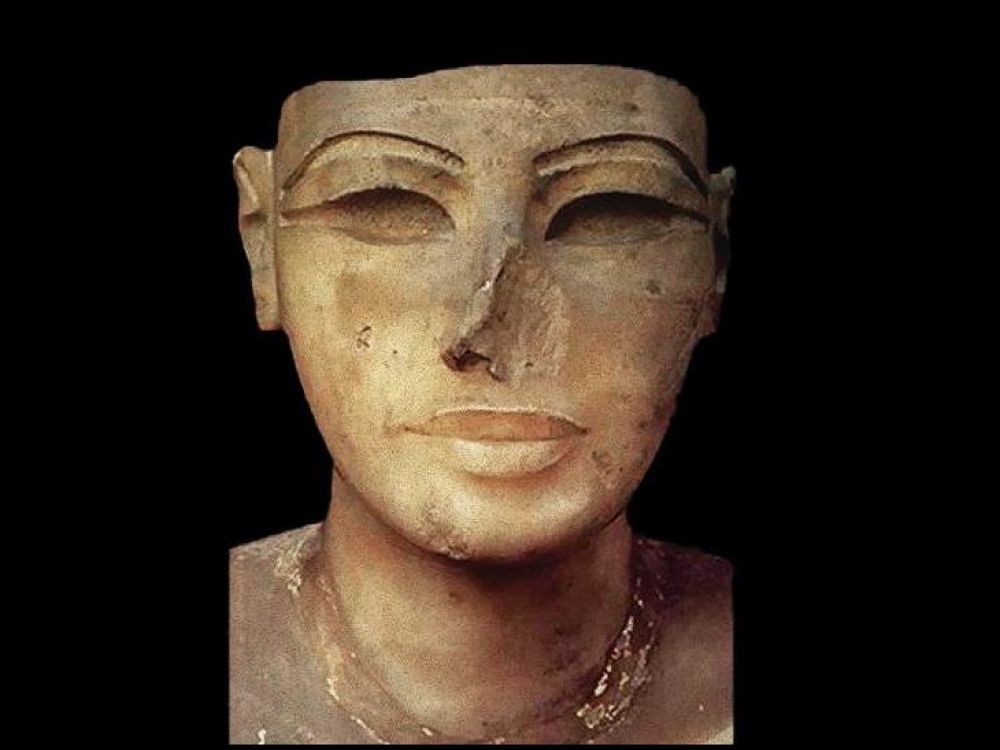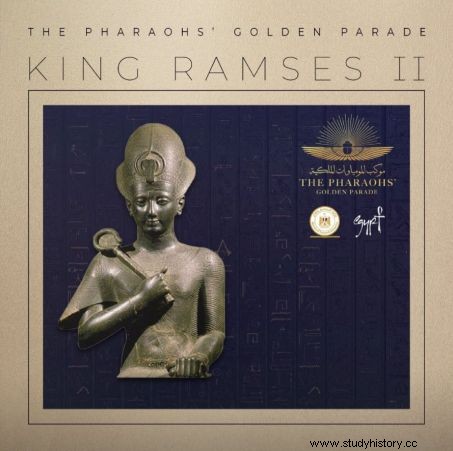LIVE VIDEO. This Saturday, April 3, 2021, during an imposing procession, 22 royal mummies leave the Egyptian Museum in Tahrir Square, Cairo, to join the new National Museum of Egyptian Civilization (NMEC).

Portrait of Seti 1st, pharaoh of Egypt of the XIXᵉ dynasty, whose mummy will be transferred along with 21 other royal remains to the National Museum of Egyptian Civilization (NMEC), in Cairo, during a major event "The Pharao's Golden Parade", April 3, 2021.
It is a pharaonic procession in the first sense of the term which the inhabitants of Cairo, the Egyptian capital, will attend on April 3, 2021. Indeed, the royal mummies of 22 former sovereigns of Egypt - including 4 sovereigns - will leave in the Egyptian Museum in Tahrir Square, in the heart of the city, is pumped up to join the new National Museum of Egyptian Civilization (NMEC -pronounced Nemec-), in El-Fustat, in the Old Cairo district (not to be confused with the Grand Egyptian Museum (GEM) of the Giza plateau).
A procession of 22 decorated floats
According to the Egyptian daily Al-Ahram, "The Pharao's Golden Parade" a procession of 22 decorated floats, accompanied by participants in period costume, should transport the royal mummies of the 17th, 18th, 19th and 20th dynasties for a final journey of eternity. The ceremony is scheduled to be broadcast live on Saturday, April 3 from 6 p.m. on the Youtube channel https://www.youtube.com/watch?v=kHuJIj9SfRU
 One of 22 chariots intended to transport the mummies of the pharaohs and queens of Egypt, across the city of Cairo, Saturday April 3, 2021, during "The Pharao's Golden Parade" event. Credits:Egyptian Ministry of Tourism and Antiquities
One of 22 chariots intended to transport the mummies of the pharaohs and queens of Egypt, across the city of Cairo, Saturday April 3, 2021, during "The Pharao's Golden Parade" event. Credits:Egyptian Ministry of Tourism and Antiquities
To prepare for this royal move, the restorers carefully examined each remains for three years to ensure that they were in good general condition. At the NMEC, the ancient rulers of Egypt will be housed in ultra-modern polystyrene boxes "filled with inert nitrogen gas to prevent any microbiological infection “, explains Manal Ghanam, director of the restoration department of the NMEC. All the remains on display come from the two royal "hiding places" discovered respectively in 1881 at the site of Deir El-Bahari (TT320), on the west bank of the Nile and in 1898 in the tomb of Pharaoh Amenhotep II (KV 35), in the Valley of the Kings, Luxor.
Royal mummies
The first museum of civilization in the entire Arab world, the NMEC project was born, with the support of UNESCO, following the international campaign to save the temples of Nubia. Presenting the Egyptian civilization from prehistoric times to the present day (Pharaonic, Greco-Roman, Coptic, medieval, Islamic, modern and contemporary times), the museum presents more than 50,000 objects and revolves around several themes:history of the Nile, writing, state and society, beliefs and thought, etc. Without forgetting of course, from April 4, the gallery of royal mummies. Partially open since 2017, this museum is the work of the Egyptian architect El Ghazzali Kosseiba and the Japanese Arata Isozaki. Originally, it was to be inaugurated in 2008 but the revolution delayed this opening. The royal mummies, they have for a long time, all eternity ahead of them.
 The effigy of the ruler Ramses II (19th Dynasty), whose mummy will be transported to the new Museum national of Egyptian civilization during the parade of the Pharaohs, April 3, 2021. Credits:Egyptian Ministry of Tourism and Antiquities
The effigy of the ruler Ramses II (19th Dynasty), whose mummy will be transported to the new Museum national of Egyptian civilization during the parade of the Pharaohs, April 3, 2021. Credits:Egyptian Ministry of Tourism and Antiquities
Among the rulers whose remains are transferred to the National Museum of Egyptian Civilization (NMEC) in Cairo (Egypt) are Ramses II, his son Meremptah, Seti I, Seti II (5 e pharaoh of the 19 th dynasty), Seqenenre Tâa II, Thutmose III, Amenhotep II, Amenhotep III (the great king of the 18 th dynasty, builder of the Temple of Millions of Years of Kom el-Heitan, of which the Colossi of Memnon survive) or Ramses III. The queens are Hatshepsut, fifth sovereign of the XVIIIᵉ dynasty, Meritamun the wife of Amenhotep I, Tiye wife of Amenhotep III and mother of Akhenaten, and Ahmose Nefertari, wife of King Ahmose.
